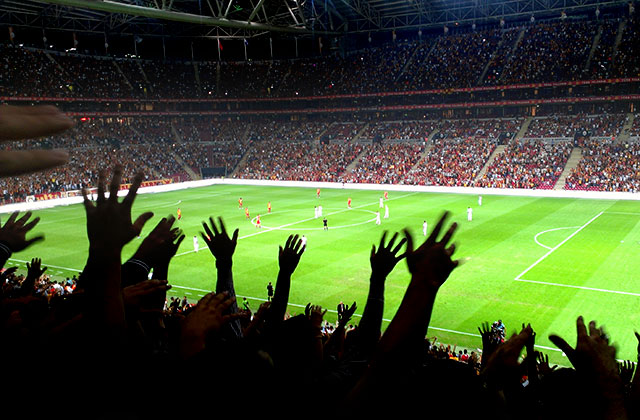We might only be a month and a half into the qualifying campaign for the 2014 FIFA World Cup in Brazil, but preparations are already well underway for the 2018 version in Russia, with eleven host cities and twelve stadiums having at the end of last month been selected to host the 64 matches of the 2018 tournament. The cities having been divided into four geographical clusters, the host cities being Moscow, as the only city with two stadiums in Luzhniki and Spartak (central cluster); St. Petersburg and Kaliningrad (Northern cluster); Nizhny Novgorod, Kazan, Samara, Saransk and Volgograd (Volga cluster); Rostov-on-Don and Sochi (Southern cluster) as well as Ekaterinburg.
Our old pal FIFA President Sepp Blatter commenting to the organisation’s website: “The announcement of the host cities is the first concrete step taken in the delivery of the 2018 FIFA World Cup. They make a decisive contribution to the success of the most popular sporting event. We look forward to a productive partnership on our road to the first FIFA World Cup in Eastern Europe. We are very pleased with the pace of the 2018 Local Organising Committee from day one when they were awarded the hosting of the event in December 2010. Their achievements show their enthusiasm and commitment.”
As I’m sure you can imagine in a country the size of Russia there are some big travelling distances on the cards, with the furthest west city of Kaliningrad, a Russian enclave between Poland and Lithuania, being a hefty 1,550 miles away from the furthest east city of Ekaterinburg, the fourth largest city in Russia actually being on the same latitude as the border between Iran and Afghanistan. Sochi on the Black Sea coast meanwhile being as far south as the Russian/Georgian border and also only 300 miles from Grozny, the capital of the Chechen Republic, if you fancy somewhere nice for a day out between matches.
As far as the stadiums themselves are concerned, well at the moment at least nine of them are scheduled to be new builds, with all but two of them in the 40,000-50,000 range as far as capacity is concerned. Those two being a new stadium for Zenit St Petersburg which is due to open in 2015 and will hold 62,000 people, and the Luzhniki Stadium in Moscow which needs to be upgraded from its current capacity of 78,400 to 89,300 minimum in order to host the World Cup Final, that upgrade likely to take place after the 2013 World Athletics Championships are held there.
Arena-2018, which was founded by the Russia 2018 Local Organising Committee in April 2012 is the organisation responsible for monitoring the design, construction and rebuilding of the stadiums and ensuring that FIFA requirements are met. The early timetable for that being LOC representatives and people from FIFA’s technical group paying inspection visits to host cities in December of this year, with January 2013 seeing the two sides present their first joint report to FIFA. The Russian LOC having already met with Ukrainian representatives to see what lessons can be learned from their joint hosting of EURO 2012.
Those eleven host cities involved having already been whittled down by two since the initial bidding process, with both Krasnodar and Yaroslavl being removed from the list. Krasnodar, north of Sochi on the Black Sea coast, actually seeing the fans of their club Kuban Krasnodar writing an open letter to Russian President Vladimir Putin and Sepp Blatter demanding justice over the decision, with part of the letter reading: “We would like to express our outrage regarding the decision to exclude Krasnodar from the list of host cities for the 2018 World Cup. We also express our mistrust in those officials who had been in charge of picking the host cities.”
Bearing in mind we are talking about both Russia and FIFA here though and I think the Krasnodar fans have little chance of seeing the decision reversed. Plenty of time for change though as we’re still just under six years from the start of the final tournament and the qualification process has still yet to be decided with all 208 current FIFA member associations eligible to enter the qualifying process. First comes Brazil 2014 though with qualifying for that ending in November 2013, even that’s a long way away then.
